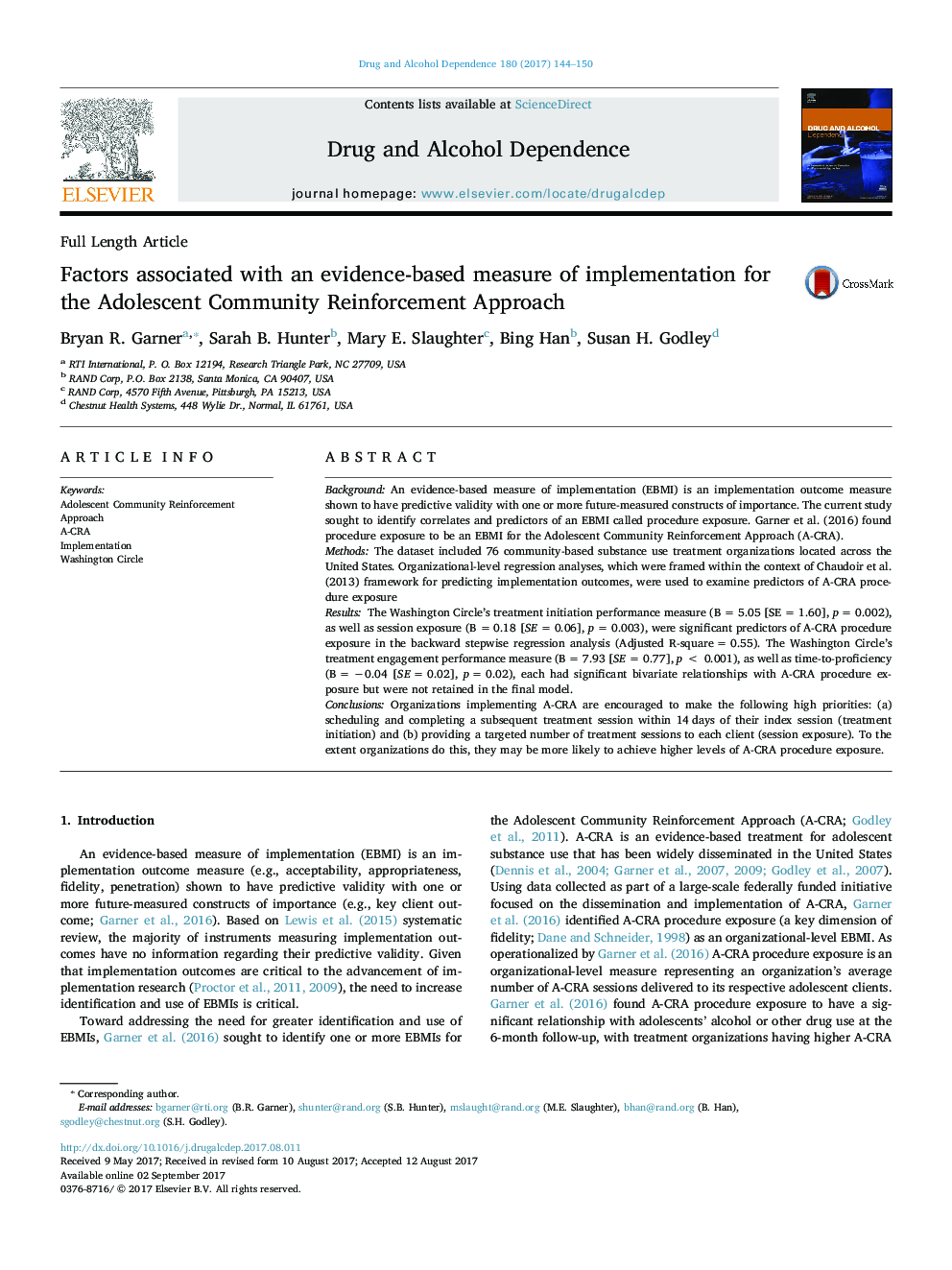| کد مقاله | کد نشریه | سال انتشار | مقاله انگلیسی | نسخه تمام متن |
|---|---|---|---|---|
| 5119856 | 1486111 | 2017 | 7 صفحه PDF | دانلود رایگان |
- Dataset represents 76 treatment organizations, 351 clinicians, and 8,869 clients.
- Found correlates and predictors of an evidence-based measure of implementation.
- Treatment initiation rate and session exposure predicted A-CRA procedure exposure.
- Treatment initiation rate and session exposure may warrant higher prioritization.
BackgroundAn evidence-based measure of implementation (EBMI) is an implementation outcome measure shown to have predictive validity with one or more future-measured constructs of importance. The current study sought to identify correlates and predictors of an EBMI called procedure exposure. Garner et al. (2016) found procedure exposure to be an EBMI for the Adolescent Community Reinforcement Approach (A-CRA).MethodsThe dataset included 76 community-based substance use treatment organizations located across the United States. Organizational-level regression analyses, which were framed within the context of Chaudoir et al. (2013) framework for predicting implementation outcomes, were used to examine predictors of A-CRA procedure exposureResultsThe Washington Circle's treatment initiation performance measure (B = 5.05 [SE = 1.60], p = 0.002), as well as session exposure (B = 0.18 [SE = 0.06], p = 0.003), were significant predictors of A-CRA procedure exposure in the backward stepwise regression analysis (Adjusted R-square = 0.55). The Washington Circle's treatment engagement performance measure (B = 7.93 [SE = 0.77], p < 0.001), as well as time-to-proficiency (B = â0.04 [SE = 0.02], p = 0.02), each had significant bivariate relationships with A-CRA procedure exposure but were not retained in the final model.ConclusionsOrganizations implementing A-CRA are encouraged to make the following high priorities: (a) scheduling and completing a subsequent treatment session within 14 days of their index session (treatment initiation) and (b) providing a targeted number of treatment sessions to each client (session exposure). To the extent organizations do this, they may be more likely to achieve higher levels of A-CRA procedure exposure.
Journal: Drug and Alcohol Dependence - Volume 180, 1 November 2017, Pages 144-150
